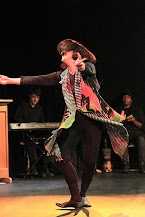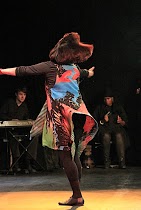 Nearly 25 years ago now, I branded myself a “dancing social worker.” I wanted to connect my two careers, that of a professional dancer and my social work career, which included time as a social work professor, a family therapist, and the director of a behavioral health care clinic. I believe now that I also wanted to lay claim to the power of remaining a person who dances, no matter what career I might pursue.
Nearly 25 years ago now, I branded myself a “dancing social worker.” I wanted to connect my two careers, that of a professional dancer and my social work career, which included time as a social work professor, a family therapist, and the director of a behavioral health care clinic. I believe now that I also wanted to lay claim to the power of remaining a person who dances, no matter what career I might pursue.
In my personal life when I would tell people “I’m a dancing social worker,” the frequent response I’d get would be an appreciative laugh. It seemed to me that people recognized that I was owning a more important truth than any of us could articulate at the time.
Scientific documentation for the value of my decision to “just keep dancing,” is now available. Neuroscientists, through brain imaging methods, have documented that dance “bulks up the brain,” sparking new brain cells and their connections. According to Judith Lynne Hanna, PhD, the author of Dancing to Learn: The Brain’s Cognition, Emotion, and Movement, dancing stimulates the release of the brain-derived protein neurotropic factor that promotes the growth, maintenance, and plasticity of neurons necessary for learning and memory. Plus, dancing makes some neurons nimble so that they readily wire into the neural network, improving memory and different kinds of learning.
 What this means is that dance activity promotes cognitive development by increasing the plasticity of the brain of the mover. At this time of near epidemic cognitive impairment diagnoses in older people, it’s important to note that these advantages continue throughout life. Some sports, martial arts, and exercise regimes, may offer some of these brain enhancing results as well, but they must be as totally physically involving and varied as participating in a variety of dance forms is for the person who continually and consistently continues dancing.
What this means is that dance activity promotes cognitive development by increasing the plasticity of the brain of the mover. At this time of near epidemic cognitive impairment diagnoses in older people, it’s important to note that these advantages continue throughout life. Some sports, martial arts, and exercise regimes, may offer some of these brain enhancing results as well, but they must be as totally physically involving and varied as participating in a variety of dance forms is for the person who continually and consistently continues dancing.

